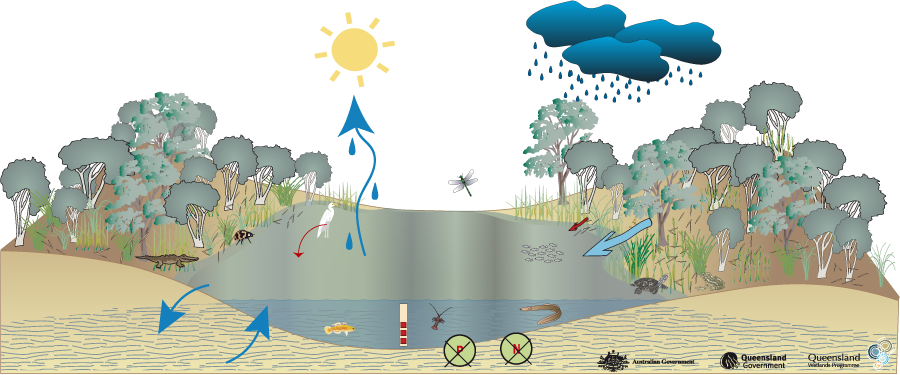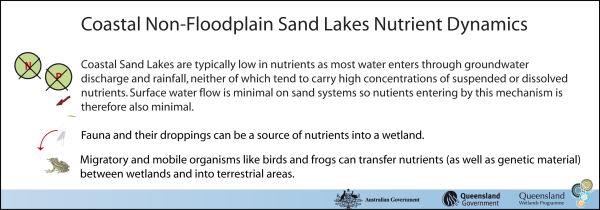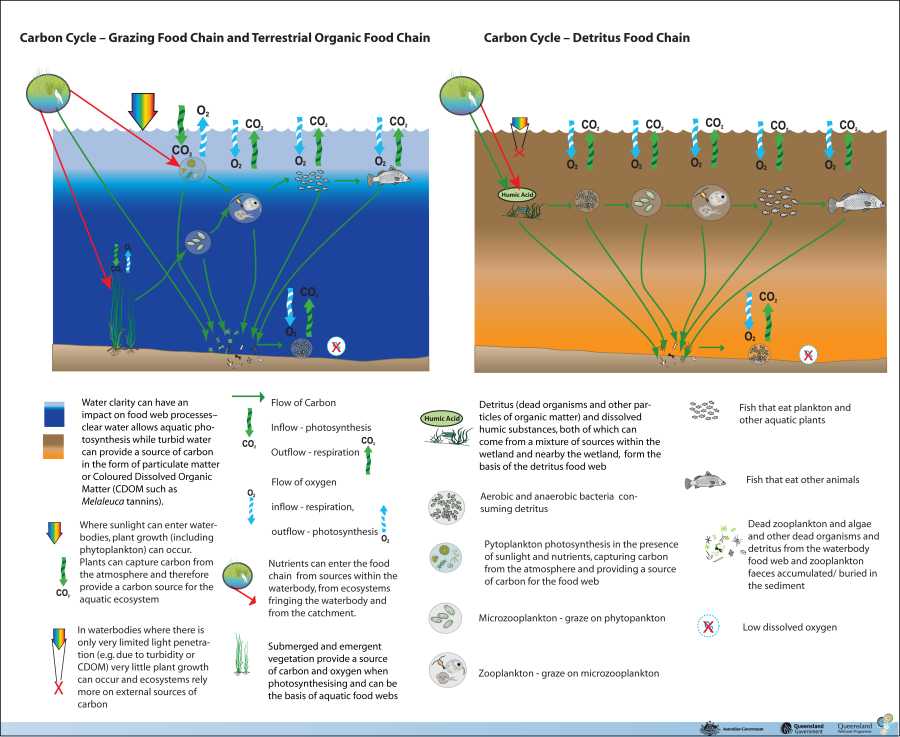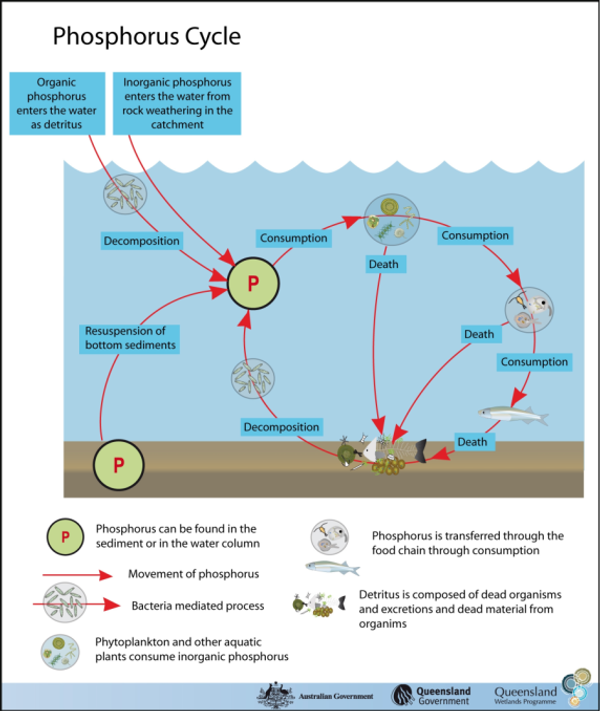|
|
Coastal and subcoastal non-floodplain sand lake—WindowCoastal and subcoastal non-floodplain sand lake—Window – Nutrient dynamics Click on elements of the model or select from the tabs below
In general, coastal dune lakes are considered to be fairly unproductive biologically in that they naturally have low concentrations of essential plant nutrients and therefore support relatively low amounts of aquatic plants (including algae) and animals. Factors that contribute to the nutrient status of a lake include:
Last updated: 22 March 2013 This page should be cited as: Department of Environment, Science and Innovation, Queensland (2013) Coastal and subcoastal non-floodplain sand lake—Window – Nutrient dynamics, WetlandInfo website, accessed 8 May 2025. Available at: https://wetlandinfo.des.qld.gov.au/wetlands/ecology/aquatic-ecosystems-natural/lacustrine/non-floodplain-sand-lake/nutrients.html |

 — Department of the Environment, Tourism, Science and Innovation
— Department of the Environment, Tourism, Science and Innovation





